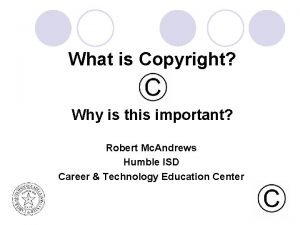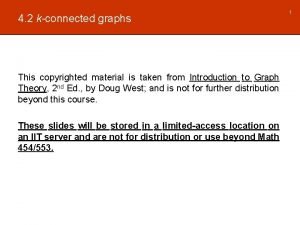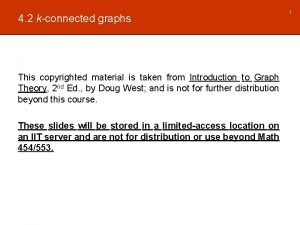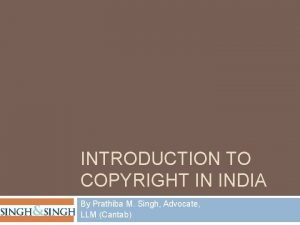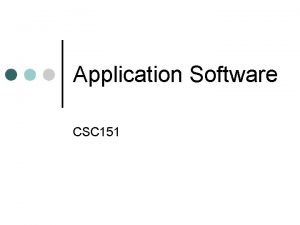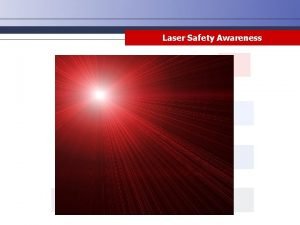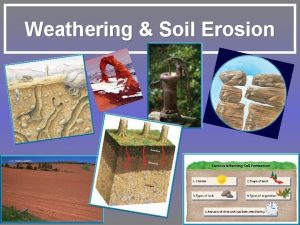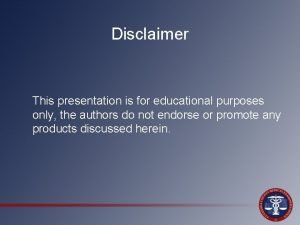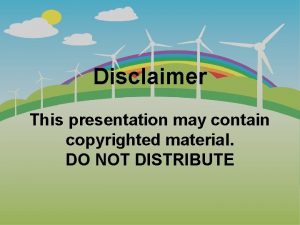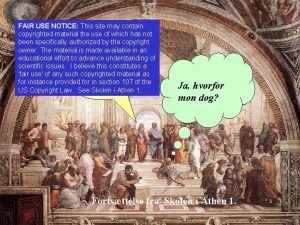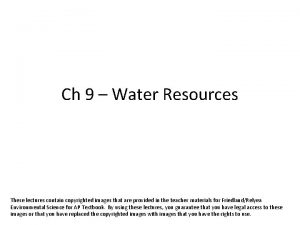DISCLAIMER This Presentation may contain Copyrighted Material DO





















- Slides: 21

DISCLAIMER This Presentation may contain Copyrighted Material, DO NOT DISTRIBUTE

Force and Motion Ophir Ortiz and Souheil Zekri Standard 1: 2. knows that waves travel at different speeds through different materials

Why are waves important? • Waves are • Waves transmit energy that topple buildings during earthquakes Figure 1: Seismogram • Figure 2: Satellite Our observations from earth to space are dependent on waves received by satellites

Outline • • Definition of a wave Characteristics of waves Examples of waves Activity

What is a wave? • Definition: A disturbance traveling through a medium by which energy is transferred from one particle of the medium to another without causing any permanent displacement of the medium itself • In simpler terms, a wave may be described as a ripple or an undulation

Stadium wave http: //www. colorado. edu/physics/2000/waves_particles/stadium_wave. html

Characteristics of Waves • The characteristics of a waveform are: • wavelength (period) • amplitude • velocity • frequency • All periodic (repeating) waveforms have these common characteristics

Wavelength • Wavelength is defined as the distance from one crest to the next crest. • The wavelength of an ocean wave: • several meters. The wavelength of the electromagnetic wave used in a microwave oven: ~ 1 centimeter.

Wavelength Applet

Amplitude A • The height of the wave is called its amplitude. • Amplitude relates to loudness in sound (for a sound wave) and brightness in light (for an electromagnetic wave).

Velocity • The velocity of the wave is the measurement of how fast a crest is moving from a fixed point. • The speed of sound is about 1000 feet/second. • The speed of light is 2. 99 x 108 meters/second.

Frequency • The frequency of waves is the rate the crests or peaks pass a given point. Cycles per second is also called Hertz. Frequency = Velocity / Wavelength

Classification of Waves Mechanical Electromagnetic Longitudinal Transverse Torsional Classification according to medium through which wave travels Classification according to wave orientation

Mechanical Waves • Matter is the medium • Sound is a mechanical wave

Electromagnetic Waves • Electric and magnetic fields are the • media Light is an electromagnetic wave

Longitudinal Waves • A sound wave is a classic example of a longitudinal • wave As a sound wave moves from the lips of a speaker to the ear of a listener, particles of air vibrate back and forth in the same direction and the opposite direction of energy transport http: //www. glenbrook. k 12. il. us/gbssci/phys/Class/sound/u 11 l 1 a. html

Transverse Waves • Disturbance is perpendicular to the direction of propagation Perpendicular: Two lines that meet at a right (90°) angle • All electromagnetic waves are transverse. This includes light.

Transverse Waves • Particles vibrate at right angles to the direction of the wave's velocity Example: waves along a string PARTICLE DISPLACEMENT 90° VELOCITY http: //online. cctt. org/physicslab/content/Phy 1/lessonnotes/waves/lessonwaves. asp

Torsional Waves • waves which twist about a central axis

Tacoma Bridge

Sound Waves • Sound is a waveform that travels through matter • Sound will readily travel through many materials • Speed of sound through air depends on: – density of the material – temperature Material Air Velocity m/s 331 Water (50°C) Brass 1540 Aluminum 6400 4490
 Is this copyrighted
Is this copyrighted When was touching spirit bear first copyrighted
When was touching spirit bear first copyrighted Is this copyrighted
Is this copyrighted Copyrighted
Copyrighted One two three in hindi
One two three in hindi Is this image copyrighted
Is this image copyrighted What can be copyrighted in india
What can be copyrighted in india Is this image copyrighted
Is this image copyrighted Is this image copyrighted
Is this image copyrighted What can be copyrighted in india
What can be copyrighted in india Is this image copyrighted
Is this image copyrighted Software consists of...
Software consists of... Disclaimer for training material
Disclaimer for training material Disclaimer for training material
Disclaimer for training material Disclaimer for training material
Disclaimer for training material Disclaimer for training material
Disclaimer for training material Disclaimer for training material
Disclaimer for training material Soils in ____ contain little organic material and are thin.
Soils in ____ contain little organic material and are thin. Disclaimer ppt
Disclaimer ppt For educational purposes only
For educational purposes only Presentation copyright disclaimer
Presentation copyright disclaimer Full disclaimer
Full disclaimer
